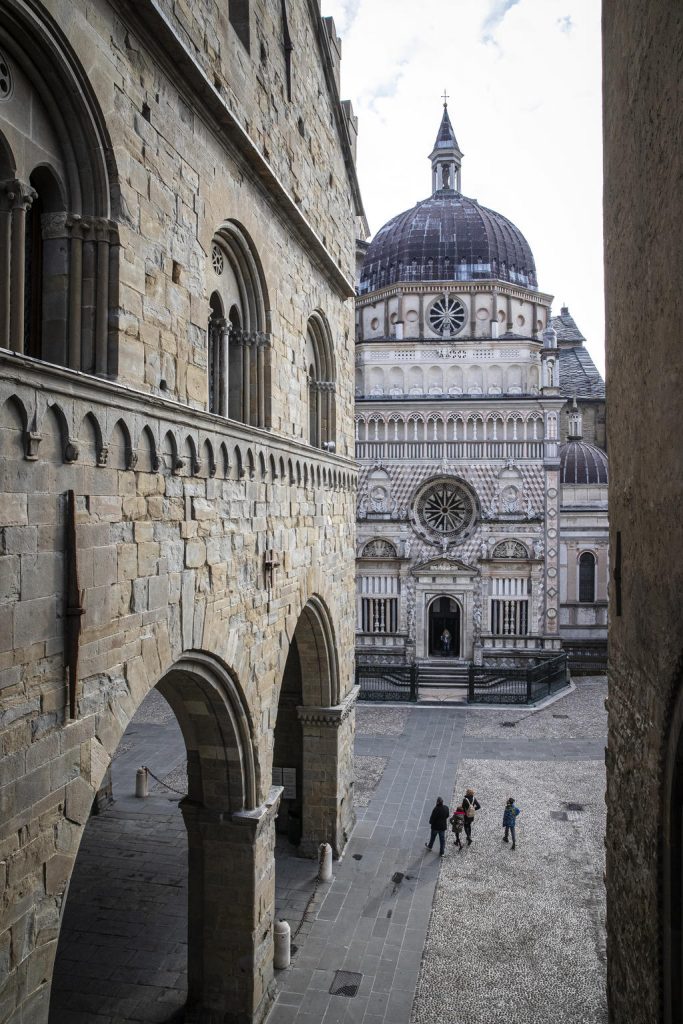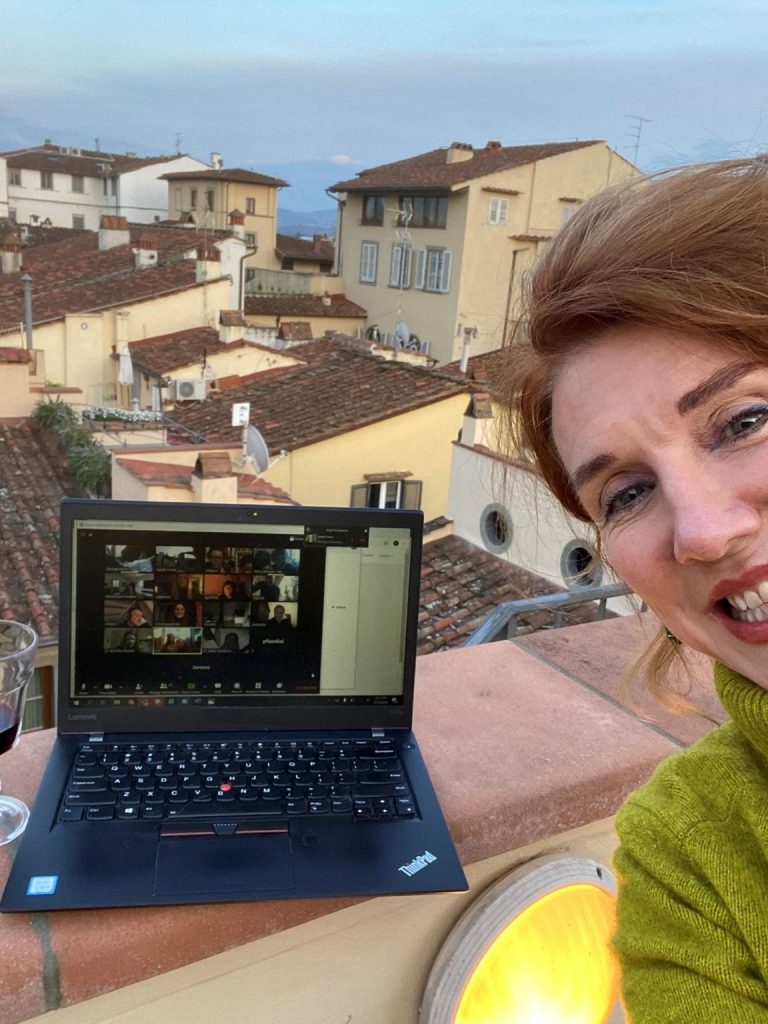
Sarah Crowe
Senior Advisor in UNICEF Office of Research-Innocenti, Florence, Italy
First, there was racial distancing – locals taking a wide berth around Chinese tourists – then there the jokes – Italians having a good time when the world thought they were in the midst of a plague. Locals scoffed when one after the next the foreign universities and colleges in Florence closed – “it’s just like the flu,” many said. Others cringed at hysterical headlines about their beloved country. That was late February and there were only a handful of Coronavirus cases, in northern Italy.
Then, like a bolt out of the blue, it became deadly serious. It was as if a war had been declared and every day the frontline shifted. All schools and universities closed, the quarantined area expanded as the cases of infections shot up.
27th February: 655 cases, 17 deaths
1st March: 1,694 cases, 41 deaths
Four days later: 3,089 cases, 107 deaths
On Sunday, March 8th, the red zones turned orange as the closed-off area expanded from 50,000 people to 16 million people in the north. Across the country places of art and beauty joined places of learning in lockdown. Yet Sunday the Tuscan spring sun shone gently, Florentines poured out onto the streets wandering across the Ponte Vecchio licking gelato, hanging out around Palazzo Pitti in bars and restaurants. It was as if, once again, they could claim back their magnificent city as their own. Some reminisced nostalgically about how it was when they were young, before the tourists came. Before Airbnb made them foreigners in their own city. They basked in the warmth of the empty streets.
March 7: 5,883 cases, 233 deaths
March 8: 7,375 cases, 366 deaths
Then on Monday around midnight, we learned that Italy was to become the first country in the world to lockdown entirely. Stay-at-home, stay-apart (minimum one meter) came the strict government decree. Nothing would be open except food stores and pharmacies.
Silence. Emptiness. Order. This was not Wuhan. This was not China. This was vibrant Bella Italia. Imagine Italy without bars and cars and restaurants and museums and church bells ringing – never on the hour.

March 13: 17,660 cases 1,266 deaths
This virus has plucked out the very social soul of Italians – a society so founded on ‘la Famiglia’ la nona, love of the good life – ‘La Dolce Vita’ – genuinely, generous and warm people. You’re greeted with a ‘ciao bella’, you’re invited for the best coffee in the world for one euro; an apero on the Terrazza.
In normal times in our street in the historic centre of Florence, around the corner from the iconic Duomo, is so thronging with people, locals and tourists, you cannot ride a bike and often you cannot sleep with the noise from the bars, people having far too much fun.
But these are not normal times – every day we read the heart-wrenching stories of grannies not being able to hug their grandchildren and children for the last time as the virus takes them ‘as if they were drowning’ wrote one doctor. A steel-cold video call goodbye marks their end. We see pictures of nurses collapsed with their masks still on. And every day the infections and deaths go up and up.
The designer boot-shape of Italy is taking on new grim style with every day the red measles-like dots spreading like a horrible rash scarring the beautiful map as the figures rise.
March 14: 21,157 cases 1,441 deaths
I’ve spent my life covering disasters, civil unrest, South Africa’s turbulent apartheid years, South Asia’s terrorist wars, the migration crisis in Europe, as a journalist and UN/UNICEF worker around the world. This is my second ‘biological war’ – I covered the Ebola crisis in Liberia in 2014 and for those of us who were there, it is a nightmare from which we never fully awoke.
They have shaped me and enriched my life in unimaginable ways, a learning that only comes from living. But these experiences have also shattered a base for family and firm friendships. Ironically, when I had the opportunity to come and work in Florence and fell in love with the place, I decided I could not do another field post and stayed on. Who would have thought it would have come to this, here.
Crises bring out the best and the worst in humanity. The crazy panic-buying, stocking up on toilet paper, fighting over a bottle of sanitizer. Here there is little sign of that but a tangible sense of ‘we’re in this together’, keeping one meter apart in the shops, no hugs, no handshakes, no apero. Somber solidarity – Italian children across the country have been bravely hanging out signs from their windows and online saying “Andrà tutto bene/Everything will be alright”.

Friday 13th March
After a week that utterly altered life as we know it in Italy, I held a digital drinks party with colleagues as much of Italy threw open their windows, came out onto their balconies to sing their hearts out, bang pans and drums and shout out in defiance, evoking the same spirit of the Italian resistance to fascism, against the cursed virus.
This is not just about a medical response – tracing, testing, treating, handwashing, social distancing – are all lifesaving. But this is not a stupid virus like Ebola that destroys off most of its hosts. This virus hops about unseen and unprejudiced from the young to the old. With this virus, you are only as well as the next person you meet. You could be a super-spreader. You could be asymptomatic and feel well but still infect others.
This is about trust in each other that we will do the right thing collectively. Trust in a public health system to deliver; It is about trust in knowing the food stores and pharmacies will remain open.

“This too shall pass”
The Irish and the Italians are cut from the same cloth in many ways – similar warmth of character, love of the good life, of music and poetry always looking for a way around authorities. Ireland is fortunate that it’s had some time to learn from Italy. Ireland has to be prepared to help not to hoard. To change – like Italians have had to – to obey orders. Social distancing here is like telling Italians not to eat pasta. It is for the greater good and for the good of each and every one.
If ever there was a heavenly sign that ‘Andrà tutto bene’, it was in the skies over Italy at the weekend as the Air Force performed to the tune of Pavarotti’s ‘we shall overcome’.
Life, as we know it in Italy, has changed utterly but La Dolce Vita will rise again, bars and churches will fill again and friends of Italy will, one day, return. And in the same way, Ireland will be able to conjure up the spirit that got it over the Troubles, poverty, the Celtic Tiger boom and bust and Ireland will get over this too.
This too will pass.
Sarah Crowe is an Irish-South African, (family in Galway) former international journalist who has worked for the UN/UNICEF for the past 16 years and currently lives and works in Florence.
As of 24th March 50,418 currently positive; 6,077 deaths, 7,432 healed, total 63,927,157

